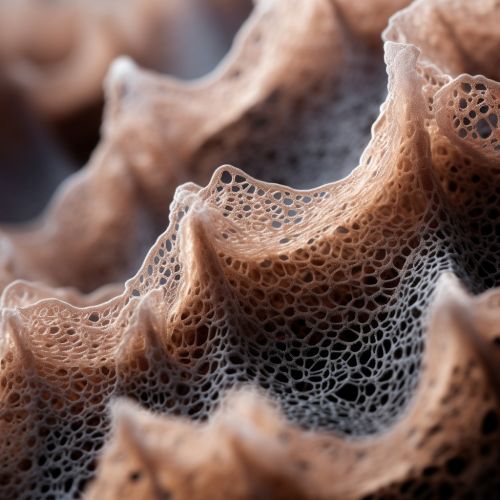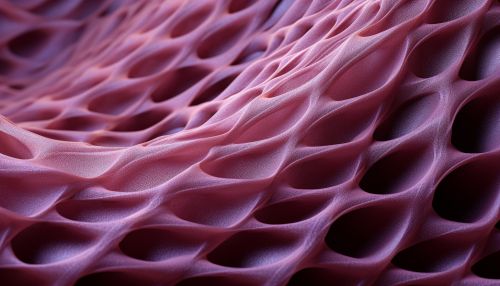Advances in Soft Matter Physics and Materials
Introduction
Soft Matter Physics is a subfield of condensed matter physics that deals with materials that are easily deformed by thermal fluctuations or small stresses. These materials include liquids, polymers, gels, colloids, foams, and a variety of biological materials. The study of soft matter involves understanding the properties and behaviors of these materials, which are often complex and exhibit fascinating phenomena such as self-assembly, phase transitions, and nonlinear dynamics.


History of Soft Matter Physics
The term 'soft matter' was coined in the late 20th century, but the study of such materials has a much longer history. Early scientists and philosophers, such as Archimedes and Aristotle, made observations about the behavior of liquids and gases, laying the groundwork for the study of soft matter. In the 19th century, the development of thermodynamics and statistical mechanics provided a theoretical framework for understanding these materials. In the 20th century, the advent of polymers and colloids led to a surge in interest in soft matter, culminating in the establishment of the field as a distinct area of research within condensed matter physics.
Types of Soft Matter
Soft matter encompasses a wide range of materials, each with its own unique properties and behaviors. Some of the most commonly studied types of soft matter include:
- Liquids: These are materials that flow and take the shape of their container. They have a fixed volume but no fixed shape.
- Polymers: These are large molecules made up of repeating subunits. They can be found in a variety of forms, including plastics, rubbers, and fibers.
- Colloids: These are mixtures in which one substance is dispersed evenly throughout another. The dispersed particles are typically larger than atoms or molecules but too small to be seen with the naked eye.
- Gels: These are semi-solid materials that are both liquid-like and solid-like. They are typically made up of a solid network that traps a liquid.
- Foams: These are materials that are formed by trapping pockets of gas in a liquid or solid.
- Biological Materials: These are materials that are found in or produced by living organisms. They include proteins, DNA, cell membranes, and many others.
Advances in Soft Matter Physics
Over the past few decades, there have been many significant advances in the field of soft matter physics. These advances have not only deepened our understanding of these fascinating materials, but also opened up new possibilities for their application in various fields.
Theoretical Advances
One of the major advances in soft matter physics has been the development of powerful theoretical models and computational techniques. These tools have allowed scientists to predict and explain the complex behaviors of soft matter systems, from the self-assembly of polymers to the flow of foams. Some of the key theoretical advances include the development of the Flory-Huggins theory of polymer solutions, the Onsager hard sphere model of colloidal suspensions, and the Dissipative Particle Dynamics method for simulating soft matter systems.
Experimental Advances
Alongside theoretical advances, there have also been significant developments in experimental techniques for studying soft matter. These include advanced microscopy techniques, such as Atomic Force Microscopy and Confocal Laser Scanning Microscopy, which have allowed scientists to observe soft matter systems at the nanoscale. Other important experimental advances include the development of rheological techniques for measuring the mechanical properties of soft matter, and the use of light scattering methods for studying the structure and dynamics of these systems.
Technological Advances
The advances in soft matter physics have also led to many technological innovations. For example, the understanding of polymer behavior has led to the development of new materials with improved properties, such as high-strength plastics and responsive hydrogels. The study of colloids has led to the creation of new types of paints, inks, and food products. The research on biological materials has contributed to the development of new medical treatments and diagnostic tools.
Soft Matter Materials
Soft matter materials are a diverse group of substances that share some common characteristics. They are typically large, complex systems, often composed of many interacting components. They are also typically far from equilibrium, meaning that they are constantly changing and evolving over time. Despite their complexity, soft matter materials often exhibit remarkable regularity and order, thanks to the principles of self-assembly and self-organization.
Polymers
Polymers are one of the most common types of soft matter materials. They are large molecules made up of repeating subunits, known as monomers. Polymers can be found in a wide variety of forms, from the plastics and rubbers that we use every day, to the proteins and DNA that make up our bodies. The properties of polymers can be tuned by changing the type of monomer, the length of the polymer chain, and the way the chains are arranged.
Colloids
Colloids are another important type of soft matter material. They are mixtures in which one substance is dispersed evenly throughout another. The dispersed particles are typically larger than atoms or molecules, but too small to be seen with the naked eye. Colloids can be found in many everyday products, from milk and mayonnaise to paint and ink. The properties of colloids can be controlled by changing the size and shape of the particles, the concentration of the particles, and the interactions between the particles.
Gels and Foams
Gels and foams are soft matter materials that are formed by trapping a fluid within a solid network. In a gel, the fluid is a liquid, while in a foam, the fluid is a gas. Gels and foams can be found in a wide range of products, from hair gels and shaving foams to aerogels and metal foams. The properties of gels and foams can be tuned by changing the size and shape of the pores, the strength of the network, and the interactions between the fluid and the network.
Biological Materials
Biological materials are soft matter materials that are found in or produced by living organisms. They include proteins, DNA, cell membranes, and many other complex systems. Biological materials often exhibit remarkable properties, such as the ability to self-assemble, to respond to external stimuli, and to repair themselves. The study of biological materials is not only important for understanding life processes, but also for developing new materials and technologies.
Future Directions
The field of soft matter physics is a rapidly evolving field, with many exciting future directions. One of the major challenges is to develop a deeper understanding of the principles of self-assembly and self-organization, which are key to many soft matter systems. Another important direction is to explore the connections between soft matter physics and biology, in order to gain insights into the behavior of biological materials and to develop new bio-inspired materials and technologies. There is also a growing interest in studying soft matter under extreme conditions, such as high pressures, high temperatures, and strong magnetic fields, which could lead to the discovery of new phenomena and the development of new materials.
